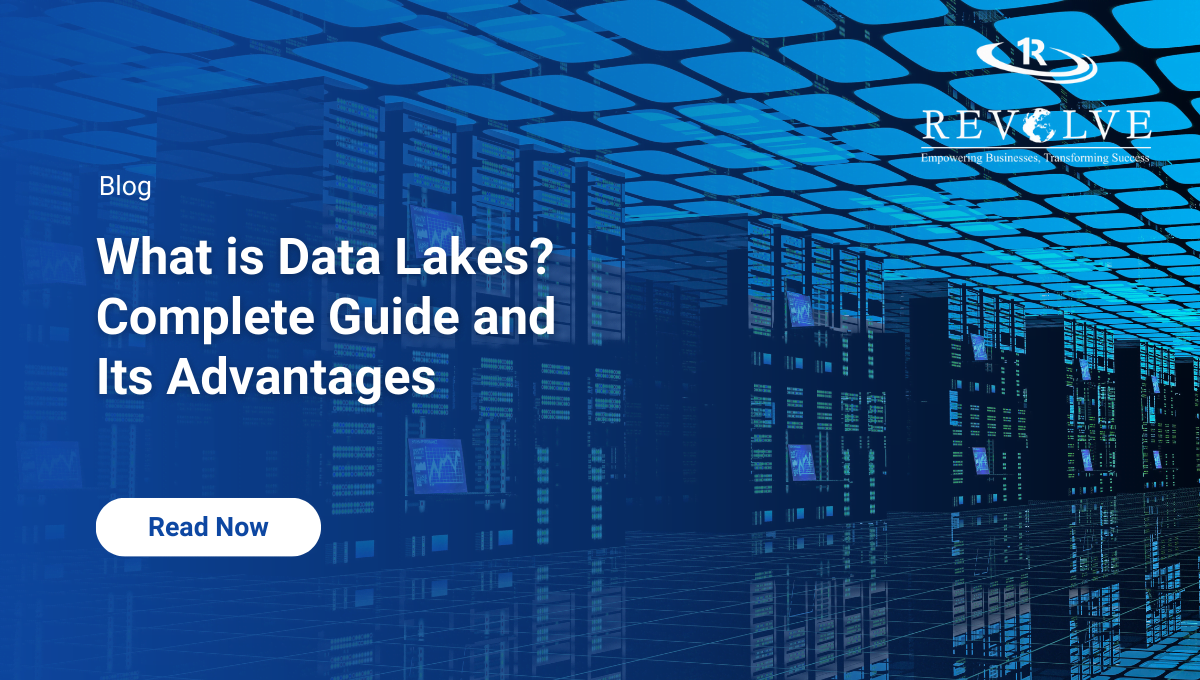What is Data Lakes? Complete Guide and Its Advantages
Introduction to Data Lakes:
In the ever-evolving landscape of data management, Data Lakes have emerged as a critical solution for organizations struggling with the vast and varied streams of information at their disposal. Essentially, a Data Lake is a centralized warehouse that allows businesses to store structured and unstructured data at any scale. Unlike traditional databases, Data Lakes accommodates data in its raw and unprocessed form, offering a flexible environment where diverse data types, such as text, images, and videos, can coexist without the need for extensive pre-processing. This open and scalable architecture makes Data Lakes an ideal choice for enterprises dealing with massive volumes of data, enabling them to harness the power of big data analytics for actionable insights.
The advantages of employing Data Lakes are multifaceted. One of the key benefits is the ability to break down data divisions, as information from various sources can be stored in its native format, promoting cross-functional collaboration and analysis. Additionally, Data Lakes supports advanced analytics and machine learning applications, allowing organizations to extract valuable intelligence from their data.
The flexibility and scalability of Data Lakes mean that businesses can adapt to changing data requirements without major infrastructure refurbishes. Furthermore, the cost-effectiveness of cloud-based Data Lakes has revolutionized data storage, as organizations can pay for the storage and processing power they use, avoiding unnecessary expenses associated with maintaining on-premises infrastructure. In essence, a well-implemented Data Lake empowers organizations to dive into the vast sea of data, turning raw information into actionable insights for informed decision-making.
1. Understanding Data Lakes:
At its core, a Data Lake is a centralized warehouse designed to store massive volumes of structured and unstructured data. Unlike traditional databases that necessitate rigid structuring of data before storage, Data Lakes allows organizations to collect and store data in its raw form. This open and flexible architecture provides a reservoir where data from various sources, including text, images, videos, and more, can coexist without the need for extensive preprocessing. This unique characteristic sets Data Lakes apart, making them an ideal solution for enterprises dealing with the challenges of big data.
2. Key Components of Data Lakes:
To better grasp the functionality of Data Lakes, it’s essential to understand their key components. The storage layer is where raw data is stored in its native format, while the processing layer enables the analysis of this data. The metadata catalog plays a crucial role in indexing and cataloging the stored data, providing a searchable inventory of available information. Additionally, Data Lakes often leverage cloud-based infrastructure, offering scalability and cost-effectiveness.
3. Breaking Down Data Divisions:
One of the primary advantages of Data Lakes lies in their ability to break down traditional data divisions. In many organizations, different departments often work with isolated datasets, hindering collaboration and comprehensive analysis. Data Lakes, by storing diverse data types in their raw form, create a unified warehouse accessible to various teams. This fosters cross-functional collaboration, allowing teams to derive insights from a comprehensive view of the organization’s data.
4. Supporting Advanced Analytics and Machine Learning:
Data Lakes serve as fertile ground for advanced analytics and machine learning applications. The raw and varied data stored in these lakes provide a rich resource for data scientists and analysts to explore. The flexibility of Data Lakes enables the application of sophisticated algorithms on diverse datasets, uncovering patterns, trends, and correlations that may remain hidden in more structured storage systems. This capacity for advanced analytics positions organizations to derive deeper insights and make data-driven decisions.
5. Flexibility and Scalability:
The adaptability of Data Lakes is a key advantage in the face of evolving data requirements. Unlike traditional databases that may require extensive restructuring to accommodate new data types or increased volumes, Data Lakes can seamlessly scale to meet changing needs. This flexibility is particularly crucial in the dynamic landscape of today’s data, where new data sources and types continually emerge.
6. Cost-Effectiveness in the Cloud:
Cloud-based Data Lakes offer a cost-effective alternative to traditional on-premises infrastructure. Organizations can leverage the scalability and pay-as-you-go model of cloud services, paying only for the storage and processing power they consume. This eliminates the need for significant upfront investments in hardware and allows businesses to align their data storage costs with actual usage, optimizing resource allocation and budgeting.
7. Empowering Informed Decision-Making:
The ultimate goal of any data management system is to empower organizations with actionable insights for informed decision-making. Data Lakes, by consolidating diverse datasets and supporting advanced analytics, play a pivotal role in achieving this objective. Decision-makers gain access to a comprehensive view of the organization’s data landscape, enabling them to make strategic decisions based on an integrated understanding of the business environment.
8. Challenges and Best Practices:
While the advantages of Data Lakes are evident, it’s crucial to acknowledge the challenges associated with their implementation. Managing metadata, ensuring data quality, and addressing security and privacy concerns are among the key considerations. Best practices include implementing durable metadata management strategies, establishing data governance frameworks, and leveraging encryption and access controls to safeguard sensitive information.
Conclusion:
Data Lakes stands as a transformative force in the realm of data management, offering organizations a comprehensive solution to navigate the complexities of contemporary data ecosystems. As highlighted in this guide, the fundamental characteristic of a Data Lake is its capacity to store vast and diverse datasets in their raw, unstructured form. This unique feature allows businesses to consolidate information from disparate sources, breaking down traditional data divisions and fostering a comprehensive approach to data analysis. The flexibility inherent in Data Lakes not only accommodates current data needs but also positions organizations to adapt seamlessly to future challenges in the rapidly evolving data landscape.
The advantages of implementing Data Lakes extend beyond mere storage solutions. By providing a unified platform for structured and unstructured data, Data Lakes facilitates advanced analytics, machine learning, and other data-driven applications. The accessibility of insights derived from Data Lakes empowers decision-makers to make informed choices, driving innovation and enhancing overall business performance. Moreover, the scalability and cost-effectiveness of cloud-based Data Lakes present a compelling case for organizations seeking efficient data storage solutions. As businesses continue to grapple with ever-expanding datasets, embracing the principles and advantages of Data Lakes emerges as a strategic imperative, positioning them to harness the full potential of their data for sustained growth and competitiveness.
Ready to dive into the world of Data Lakes and revolutionize your data management? Explore our comprehensive guide and discover the advantages that await you! Click here to unlock the full potential of your data ecosystem.

